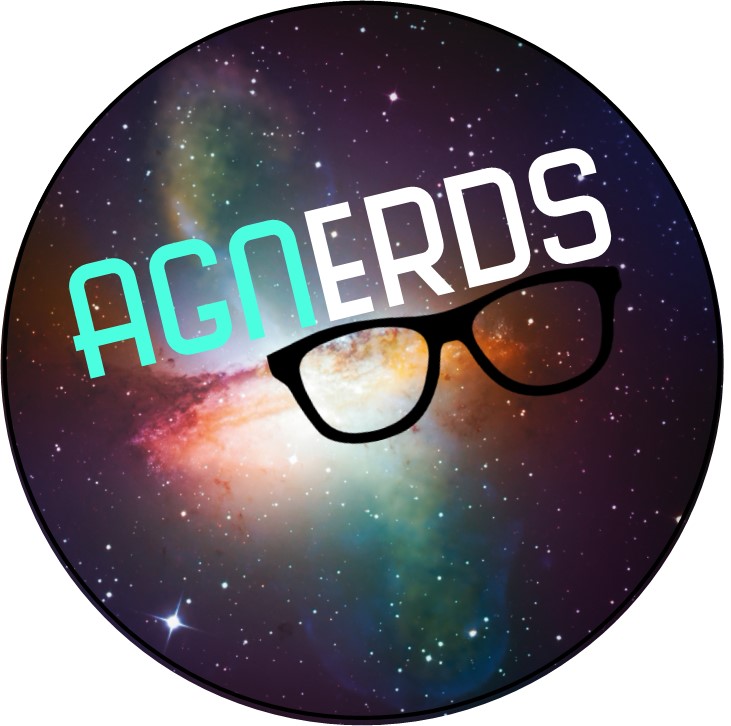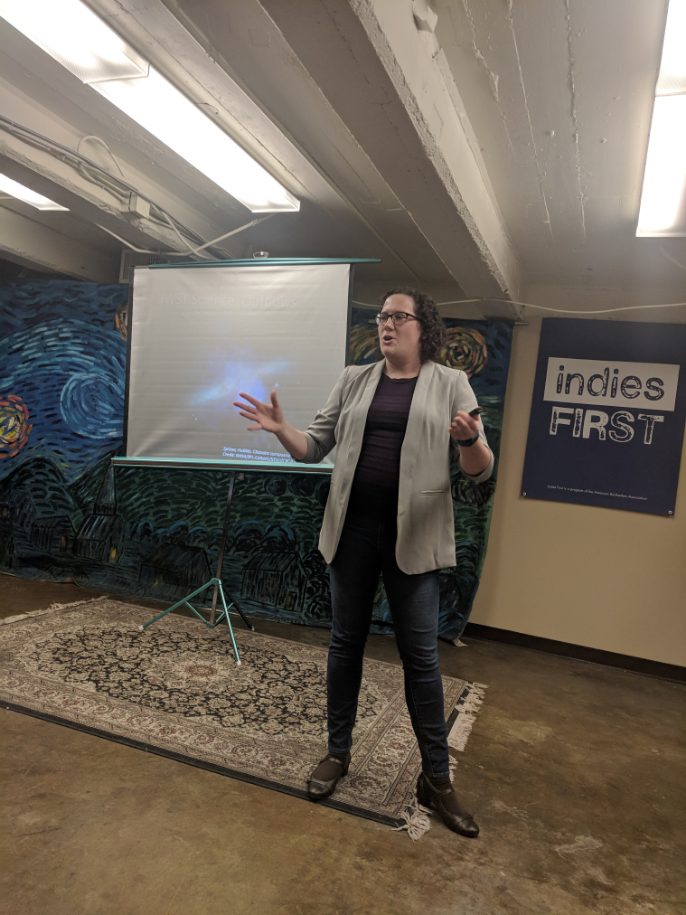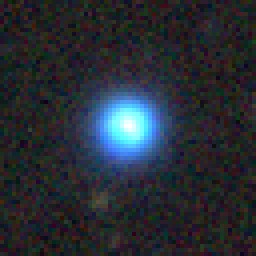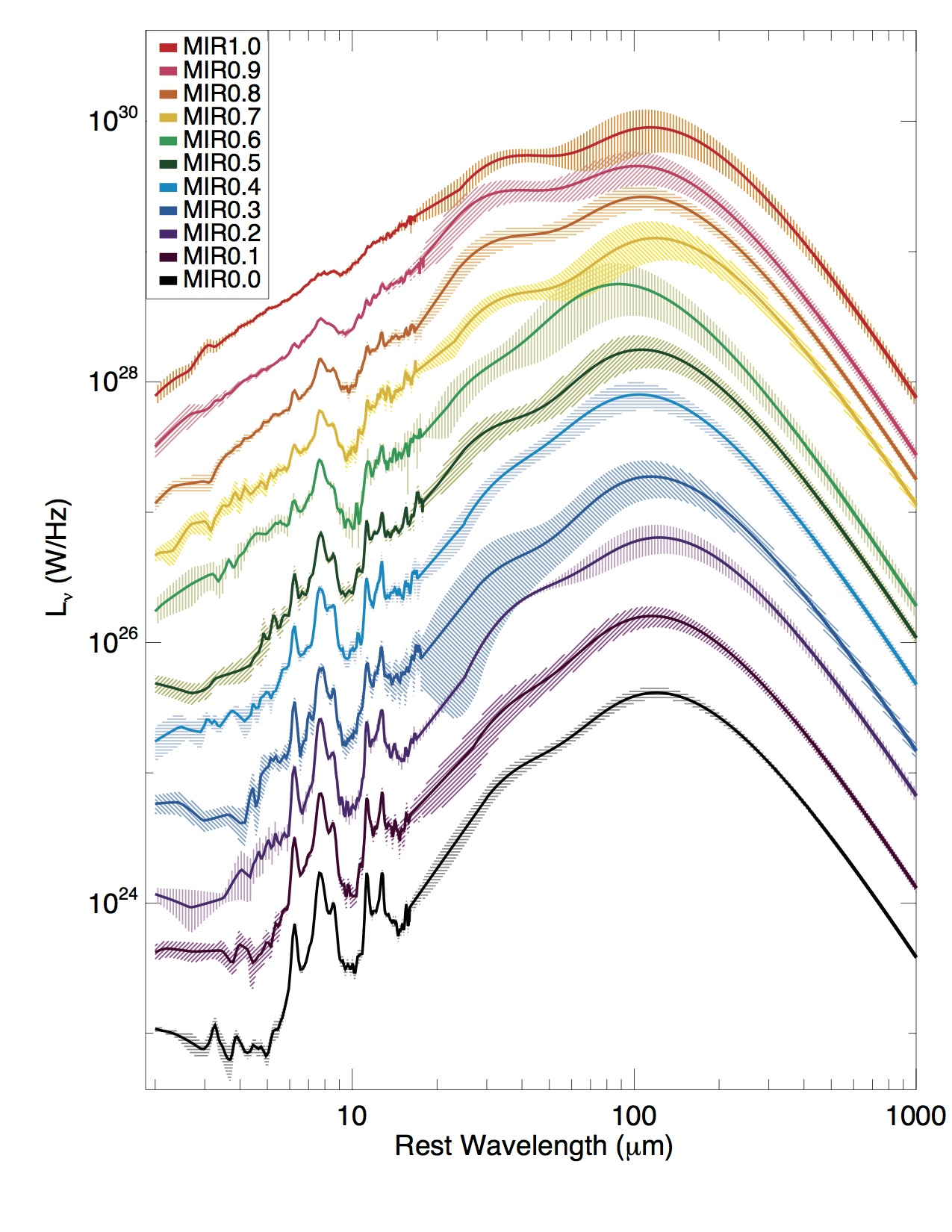Research Overview: Uncovering Hidden Monsters
Most galaxies host a supermassive black hole at their centers, more than a million times the mass of our Sun. These monsters are often lurking unseen behind thick blankets of dust. As material falls onto the black hole, it transforms into an active galactic nucleus (AGN), outputting radiative and kinetic energy that can dramatically change the surrounding galaxy. I aim to understand how supermassive black holes grow and impact their host galaxies, both in the most active, massive galaxies and in more average galaxies like our Milky Way. I use space telescopes to uncover the secrets at the centers of galaxies in the distant universe, 7-10 billion years in the past. This is an epoch in which galaxies have ample fuel for forming new stars and feeding their black holes. I frequently use observations from the Chandra X-ray Observatory, XMM-Newton, the Hubble Space Telescope, the Herschel Space Observatory, and most recently, NASA's newest flagship mission, JWST.
My work has frequently been featured in the press and has challenged existing models of how black holes and their host galaxies co-evolve.
See some research highlights below.
Full list of publications on NASA/ADS.
MEGA Mass Assembly with JWST
The MIRI EGS Galaxy and AGN (MEGA) survey was a 67 hour Cycle 2 JWST observing campaign, of which I am the Principle Investigator. MEGA is the largest area MIRI survey in more than 3 filters. We observed the EGS field in F770W, F1000W, F1500W, and F2100W. Our final catalog contains >4000 galaxies. The primary goals of MEGA are to: 1) probe the co-eval mass assembly of stars and black holes in galaxies 7-11 billion years in the past; 2) uncover the most heavily dust-obscured supermassive black holes; and 3) characterize how obscured star formation drives physical changes within galaxies.
Image of MEGA galaxies. Credit: NASA/JWST and Bren Backhaus.
Learn MoreCold Quasars
In 2019, I coined the term "cold quasar" to describe galaxies that host an unobscured, luminous AGN but also have prodigious amounts of star formation fueled by a substantial cold gas reservoir. According to the classing picture of quasar evolution, when two gas-rich galaxies collide, it fuels a burst of star formation followed by accretion onto the central supermassive black hole of the newly coalesced galaxy. The supermassive black hole is initially obscured by dust and gas, but eventually, it grows powerful enough to launch winds that clear the circumgalactic medium. At this point, the quasar becomes unobscured and is blue in color. In theoretical models, these quasars have very low star formation rates, as the host galaxy's gas reservoir has been blown away or heated. Cold quasars are surprising, rare population, which provide new insights into how galaxies evolve.
Image from Kirkpatrick et al. (2020) and the DECal Legacy Surveys.
Learn MoreDusty Galaxy Templates
The mid-infrared (IR) emission from galaxies arises directly from the dust (graphites and silicates). Galactic dust is heated primarily by very young stars, which provide the photons to stimulate emission of polycyclic aromatic hydrocarbons at 6.2, 7.7, 11.2, and 12.7 microns. If the galaxy hosts an AGN, circumnuclear and toroidal dust can be heated by radiation from the black hole's accretion disk. Mid-IR observations are then very powerful for measuring the amount of star formation in a galaxy and diagnosing the presence of an AGN, if the mid-IR emission can be reliably disentangled into the various heating sources. My publicly available infrared (IR) galaxy templates demonstrate how the AGN emission can change the shape of the IR spectral energy distribution. I developed multiple sets of templates during my graduate school work. The templates are empirically derived from hundreds of galaxies using ground-based, Spitzer, and Herschel photometry and Spitzer/IRS spectroscopy. These are ideal for use with z=0.3-2.8 infrared luminous galaxies.
Figure from Kirkpatrick et al. (2015)
Learn MoreInclusion and Equity Efforts
I believe that every student has a right to a quality education and access to research opportunities regardless of gender, ethnicity, race, socioeconomic background, ability, or religion. It is inherently right that all students should have the support to pursue whatever career path they choose, regardless of their identity or background. I strive every day to make our field, my department, and my university a welcoming and safe space for all students.
Science progresses because of ideas and problem-solving. In modern science, ideas are largely generated through team work—the lone genius scientist trope no longer exists. Science as a group endeavor requires diversity of thought—approaching the problem from many angles. And diversity of thought arises out of diversity of life experiences. When we broaden our perspectives through diversity, we do better science. It is the moral responsibility of the people who wield power in our field to make our field safe and accessible for all.
My specific contributions include serving as the inaugural chair of our department's Diversity, Equity, and Inclusion Committee. The DEI Committee worked to improve a sense of welcoming for all undergraduates in the department and to ensure equitable graduate admissions practices. I also was the faculty liaison for the Diversity in Physics group and served as the Co-Director for the university's former Multicultural Scholars Program, where I provided mentoring and professional development opportunities for underrepresented students majoring in the natural sciences.
Read more about how KU students are contributing to our understanding of active galactic nuclei.

Activities and assignments that I have created for my classes, shared for public use.




